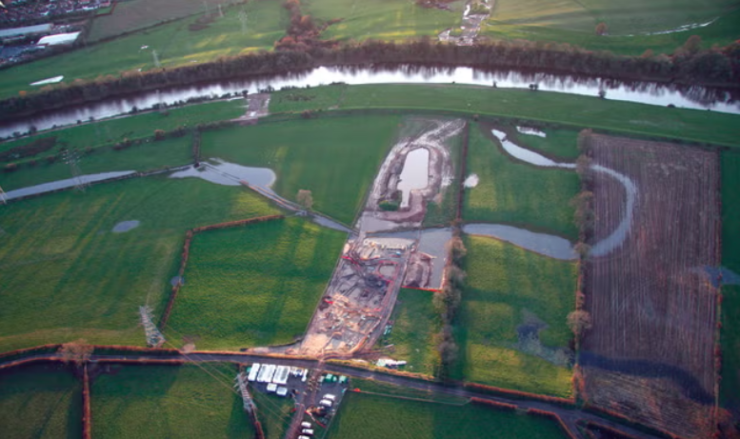Archaeologists have discovered evidence at an ancient British festival site that could provide new documentation to the distant origins of British identity.
It has long been known that the word Britannia comes from the Celtic word Pritani, meaning “the painted”. This name certainly reflects a prehistoric tendency towards body painting. However, until now there has not been much potential archaeological evidence for such a cultural tradition.
The greatest collection of red ochre fragments ever discovered in Britain was discovered during recent examinations of a 6500 year old suspected ceremonial ancient site in north western England. Near Carlisle, a Stone Age site yielded more than 600 red ochre fragments as well as the grinding stones that were likely used to ground red ochre lumps into powder for the manufacture of pigment.
It’s possible that the location, which was once a small (1.2 acre) island in the River Eden, had been used for important rituals and economically significant communal gatherings. According to some evidence, it served as a crucial fishing base when the spring salmon run was at its most active, which was probably in mid-April.
Archaeologists have also discovered two very large early Neolithic wooden tridents that appear to have been deposited in the nearby swamp as votive gifts to local gods or ancestor spirits. The site has evidence of the production of Stone Age arrows.
While it is difficult to know precisely how many people participate in the spring salmon run and associated ceremonies and rituals, there are indications that it is an important annual event.
The flint working debris indicates that many hundreds of arrows and other artifacts were likely produced there annually throughout the late Mesolithic (Middle Stone Age) period (about 300,000 fragments have been collected from just the 12% of the island that has been excavated). Over the course of over 800 years, the location had its greatest active use.



This indicates that there were likely more than 100 people there, which indicates that the April gatherings were drawing members of up to six separate small hunter-gatherer bands and extended families.
The artifacts found reveal that the people gathered here came from a very wide geographical area. They obtained volcanic glass (pitchstone/obsidian) from the Isle of Arran (120 miles by sea), the Yorkshire coast (100 miles by cross-country), the Cumbrian Mountains (Lake District), the North Pennines, the Solway Firth coast and much closer to home, such as the Southern Highlands of Scotland.
The location has produced the greatest volcanic glass collection (about 230 pieces) ever discovered in England.
The archaeologists, who work for Oxford Archaeology, one of the top archaeological consultancies in the UK, also discovered a unique work of Mesolithic ‘art’: a piece of stone with three parallel lines carved into it.
The now long vanished island that the Stone Age Britons used as their base for salmon fishing (at Stainton West near Carlisle) was perfectly situated. The river was split into several extremely tiny channels in a section of the Eden’s lower reaches during prehistoric periods.
As a result, as the salmon moved upstream from the Irish Sea, they were forced to swim through those tight passages where they could be caught more easily by humans. Stone Age fishermen would have likely temporarily impeded the narrow channels (with nets or wickerwork obstacles) in order to concentrate as many salmon as possible in as small an area as feasible.
For the first time, extensive evidence has been found to show how interconnected British Stone Age hunter-gatherer groups were before they turned to agriculture. Archaeologists have also found the first large number of red ochre fragments in British festival (610 in total).
Cover photo: Ancient riverbed with evidence of human activity at Stainton West near Carlisle. Oxford Archaeology
